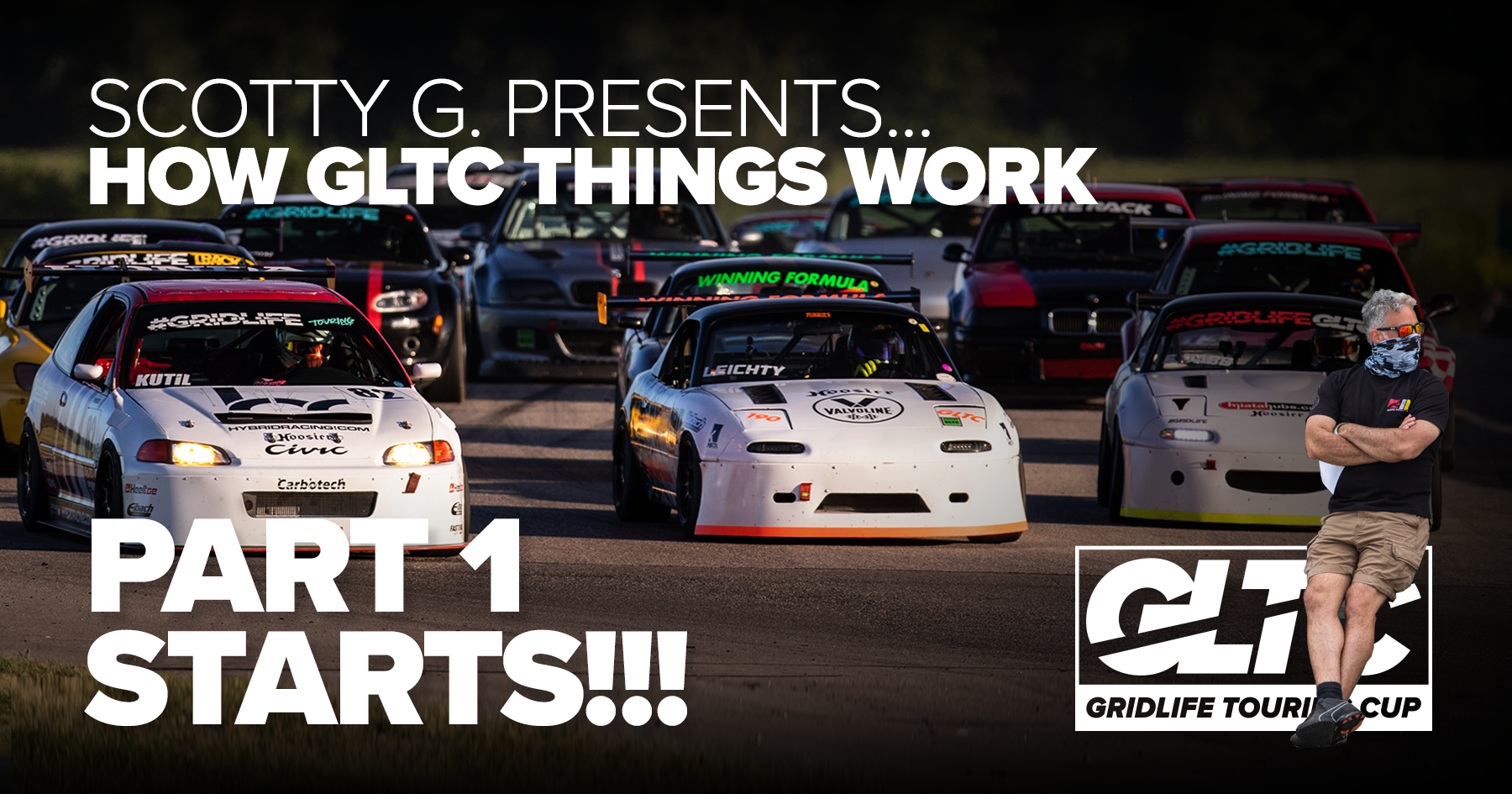How GLTC Things Work / Part 1: STARTS!
"How GLTC Things Work."
From Scott Giles - Competition Driver Development Lead
Starts!
Do you love race starts? I love race starts. They're the best part of a race, which is why we do at least 4 of them every weekend.
Grid
Before we can start a race, we have to grid everyone. It's always helpful to our grid team for people to show up as soon as the previous session rolls, and everyone waiting until the last minute to come to grid almost guarantees a delayed start which results in a shortened race. Our rules here fluctuate a bit as different tracks present different grid challenges (I'm looking at you Gingerman), but any penalties for not being in your grid spot on time will be clearly communicated in the driver's meetings. You should assume if you're late, you're going to start at the back.
If you just thought to yourself "But what if I miss the driver's meeting?" the answer is you're not supposed to do that, so don't do that.
If you just thought to yourself "Hmmmm, that's a crafty way to make sure everyone comes to the driver's meeting." Why yes. Yes it is.
Empty Grid Spots -
We fill them up. If you qualified 4th and 3rd place doesn't show up to grid, you're starting 3rd <high five>.
The Splitter -
In this case The Splitter is not the thing on the front of your car that makes you carry more ballast, it's the person at grid exit telling you if you are starting on the left or right side of the track. This person wears the Orange Gloves of Power and points to the side where you need to go. GO TO THAT SIDE. Please don't decide that you're 11th so you absolutely know you're starting on the left. Things change, people don't show up to grid, the polesitter may have decided to be a contrarian. Whatever. Go where the splitter points. And pretty please don't run over the splitter.
Formation Lap (rolling starts) -
The goal is always one formation lap, so please get formed up as quickly as possible. Stragglers are no fun for the people stuck behind them, so don't be that no fun person. The pace car will always roll slow early to give everyone time to exit the grid (this varies by track, and I'm looking at you again Gingerman), and then increase to a pace of 40 to 45mph. Our goal is to see everyone 2 by 2 BEFORE entering the start straight. If the field looks good, the lights will go off on the pace car and it will enter pit lane. Once the pace car exits the track the pole sitter controls the field and is expected to steadily maintain the pace car's speed until the green flag is dropped.
Wave Offs -
The Starter or Race Director can wave off a start if the field is not formed up well. In this case you will get exaggerated NO gestures and no green flag. This means you get another formation lap with the pole sitter acting as pace car. 40 to 45mph... Try again. The clock is now running on the race length, because the schedule doesn't care about your shenanigans.
Typically if just the very back of the field is not formed up we will go green, and have some "please don't do that" discussions after the race.
START - GREEN GREEN GREEN!!! GO!
With GLTC green means go. You DO NOT have to wait to cross the starting line to execute a pass. We do not want brake checking and field compression issues with a waving green flag.
Jumped Starts -
We have multiple people watching from multiple points, and we also typically have at least one camera in every car. Jumping the start is not recommended as you're probably going to get caught. If its extremely obvious and multiple officials agree, you're going to get a black flag and a visit to pit lane, where we will make sure the "you've been naughty" conversation is long enough to result in a Very DFL rejoin. If it's a close call, video will be reviewed post race and the penalty determined at that point.
This also applies to lagging back, creating an excessive gap, and getting a run. Don't do that.
See also "teamwork" bumping before the green because two cars accelerate better than one. Yeah... Don't do that one either.
Standing Starts -
We do them sometimes. For standing starts everyone will grid, split, and formation lap the same as a rolling start, and return to marked positions on the front straight. There will be grid workers on the safe side of the pit wall providing guidance to your stopping point. Once everyone is in place, the starter will hold up one hand to indicate that we are 5 to 10 seconds from green, and then... GREEN.
In the off chance we have access to a light system we'll use it, but that's a bonus we don't plan on in advance, and another reason to come to the drivers meeting. Right?
Jump start rules for standing starts are the same as rolling starts.
So that’s starts! Stay tuned for more episodes of How GLTC stuff works.


